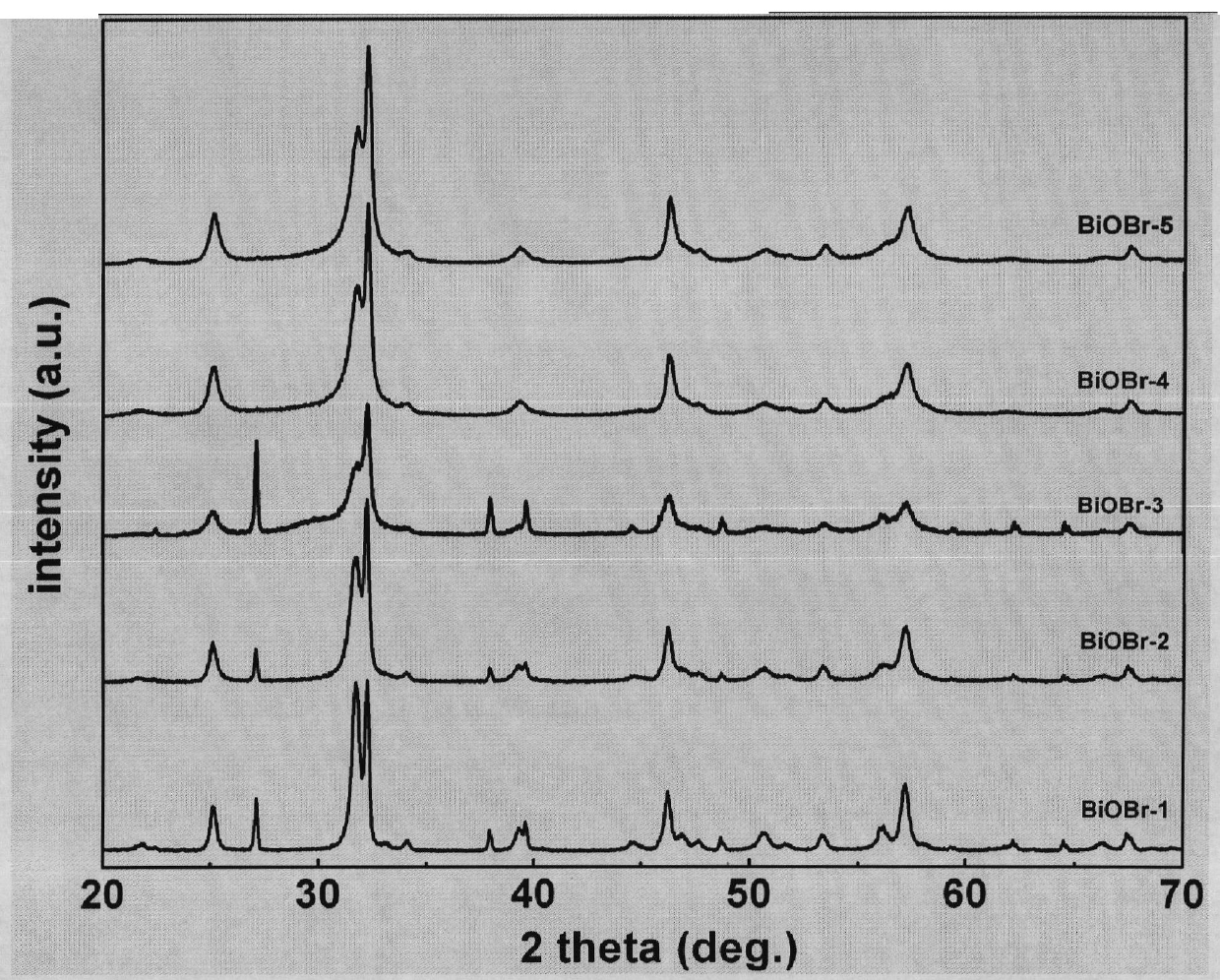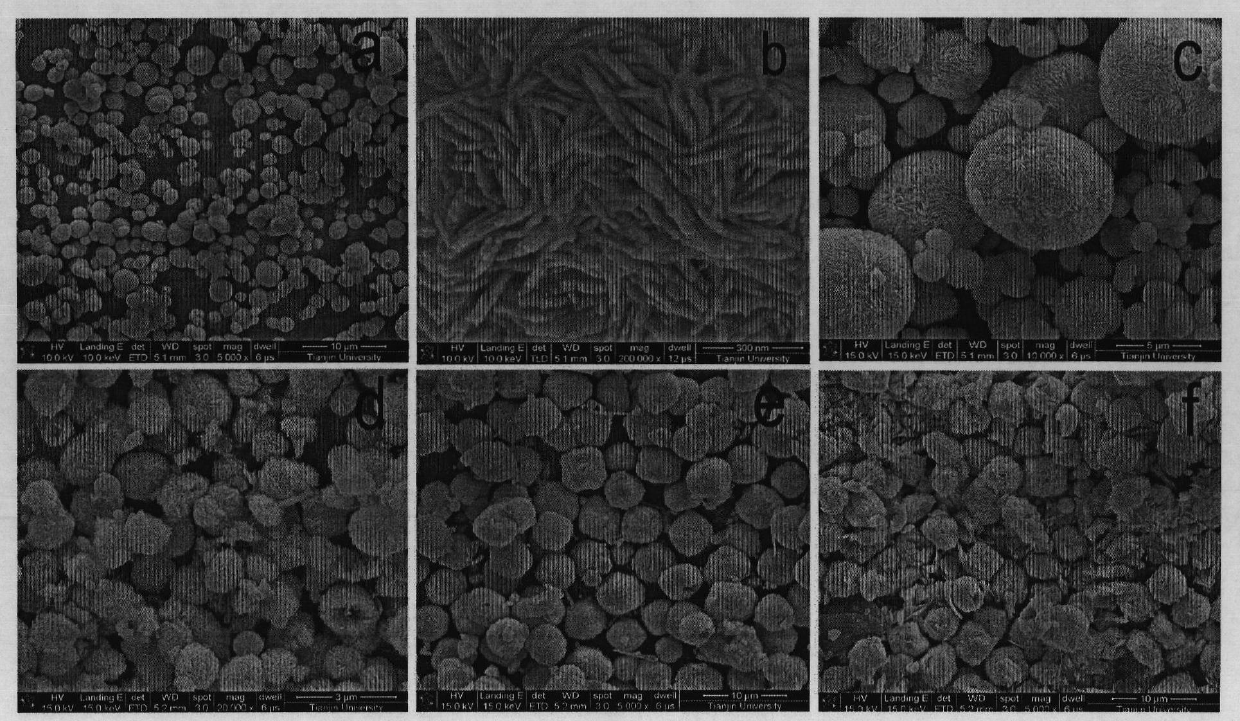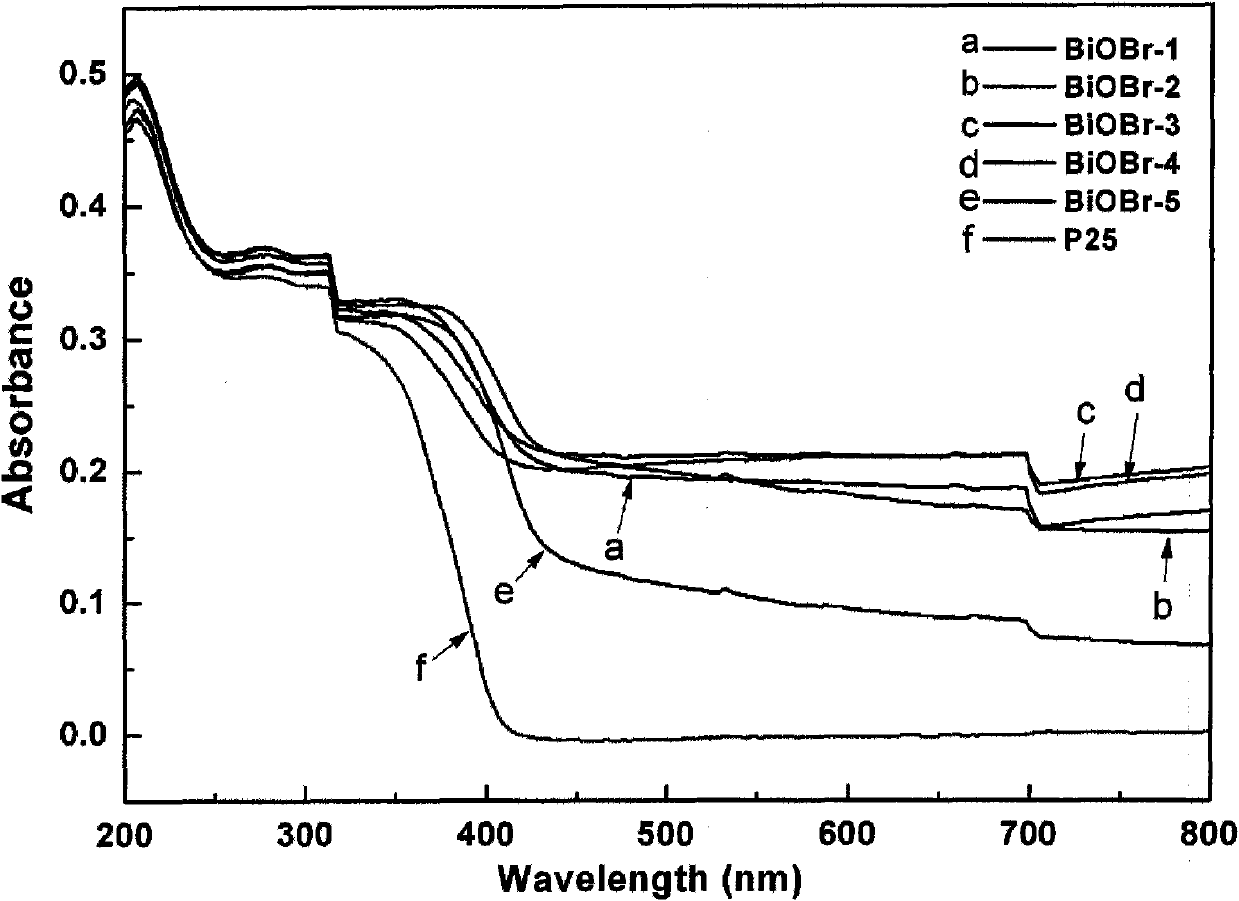Visible light photocatalyst of BiOBr micro sphere and preparation method thereof
A technology of photocatalysts and microspheres, which is applied in the field of photocatalysis and material chemistry, and can solve problems such as limiting the application of photocatalysis
- Summary
- Abstract
- Description
- Claims
- Application Information
AI Technical Summary
Problems solved by technology
Method used
Image
Examples
Embodiment 1
[0019] Dissolve 0.5485g CTAB in 40mL of ethylene glycol solution, stir evenly to obtain cloudy liquid A; weigh 0.7300gBi(NO 3 ) 3 ·5H 2 O, add it to the above solution A, and stir evenly, then magnetically stir this solution for 30min; transfer the stirred solution into a 50mL polytetrafluoro reactor, and react at 180°C for 12h; Centrifuge again, wash with water, and finally dry at 60°C to obtain BiOBr microspheres.
Embodiment 2
[0021] The mass of CTAB added in Example 1 can be adjusted to 1.0970g and 1.6455g, and the volume of ethylene glycol added can be changed to 30 or 40mL, thereby changing the conditions to obtain BiOBr with the following different conditions.
[0022] Catalyst name
Embodiment 3
[0024] Get sample 0.1g among the embodiment two as catalyst (with P25 as contrast), join in the Rhodamine B solution of 200mL 0.1mol / L, use 800W xenon lamp as light source, test its photocatalytic degradation to organic dye Rhodamine B Effect. Figure 4 It shows that the photocatalytic effect of BiOBr-4 is the best, that is, when Bi(NO 3 ) 3 ·5H 2 The photocatalytic degradation effect of the synthesized BiOBr microspheres is the best when the ratio of the amount of O and CTAB is 1:1, and the volume of ethylene glycol is 40mL.
PUM
| Property | Measurement | Unit |
|---|---|---|
| diameter | aaaaa | aaaaa |
Abstract
Description
Claims
Application Information
 Login to View More
Login to View More - R&D
- Intellectual Property
- Life Sciences
- Materials
- Tech Scout
- Unparalleled Data Quality
- Higher Quality Content
- 60% Fewer Hallucinations
Browse by: Latest US Patents, China's latest patents, Technical Efficacy Thesaurus, Application Domain, Technology Topic, Popular Technical Reports.
© 2025 PatSnap. All rights reserved.Legal|Privacy policy|Modern Slavery Act Transparency Statement|Sitemap|About US| Contact US: help@patsnap.com



